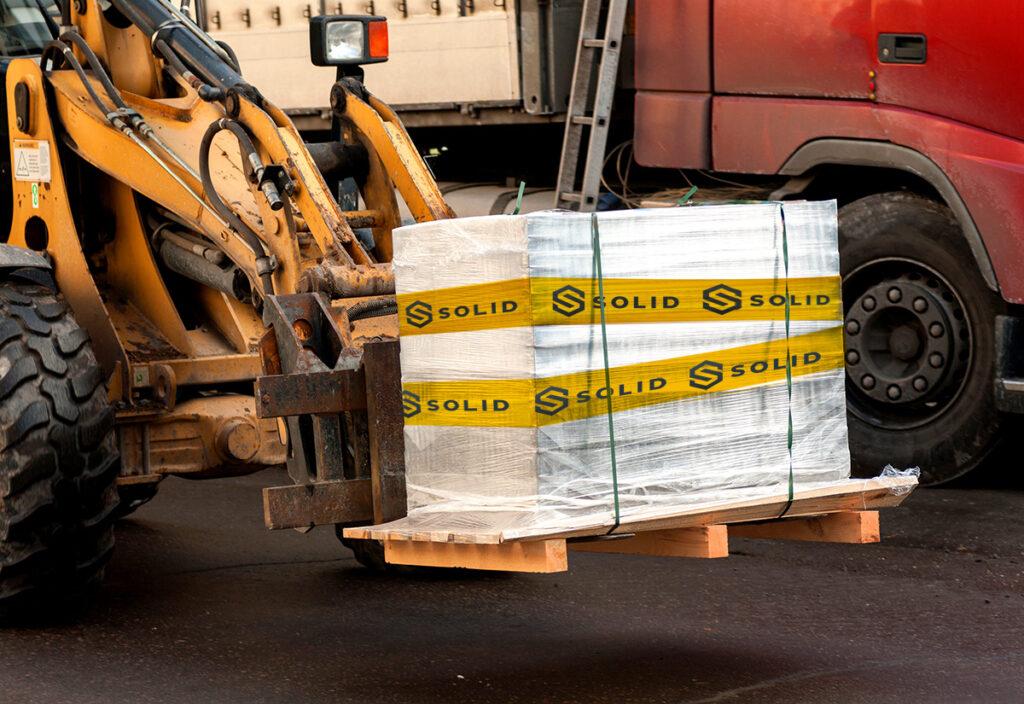The hardscape industry, which covers all non-plant aspects of landscaping, is growing. Brick patios, stone fire pits, wooden gazebos, and more are all being ordered and shipped across the country, with demand forecasted to increase by 3.3% per year to reach $3.9 billion in 2025. As a result, more products than ever are being exposed to the outdoors for long stretches of time, either during transportation or storage.
What does this mean for the packaging industry? As demand for outdoor products grows, companies must contend with the challenges of protecting products from the outdoors. However, this growth also presents an opportunity to use pallet stretch wrap for advertising, capitalizing on a large audience of people spread across the country.
The challenge: Protection from the elements
While hardscape materials are usually designed to be installed outside and withstand the elements, they must be stored before they can be used. That means they are left on pallets in warehouses, yards of supply houses, lumber yards, or even onsite.
As a result, the pallet stretch wrap protecting these materials must similarly withstand the elements. They should be able to handle moisture buildup, high or low temperatures, and the effects of Ultraviolet (UV) degradation.
The solution: Additional layers of protection
There are a few options warehouse operators can use to protect building materials during storage:
- Plastic top sheets and tier sheets: These wraps prevent moisture and humidity from building up on wood, brick, and metal by covering the top and bottom of the pallet.
- Two wrappers: Another solution is to use two stretch film wrappers around the product—one that wraps horizontally and the other vertically–so that all four sides of the pallet are wrapped.
The material that the stretch film is made from is also critical. If stretch film is not stabilized against UV rays, it will degrade within 30 days of outdoor storage, making it difficult to keep materials on hand and protected. The solution is to use UV-stabilized stretch film. Used in construction, landscaping, building industries, and more, these films contain ultraviolet inhibitors that dramatically slow degradation.
Stretch films are thicker than their everyday counterparts, which is especially important for transporting or storing products with sharp edges. Bricks, complicated machinery, concrete, and other heavy or sharp objects can be protected with pallet stretch wraps. Unsure which type of pallet stretch wrap to use? The experts at Stretchtape can help you make the right decision on which type to use.

The opportunity: A visual delivery system
Pallet stretch wrap is popular not just because it protects products during transport and storage, but also because of its visual appeal. Printed logos and designs can be displayed on every pallet load sent out, ensuring products seen during transit serve to reach prospective customers en route. As building materials are often delivered on flat-bed trucks, the stretch wrap is shown to everyone the truck passes, allowing companies to seize an opportunity for increased brand awareness.
The results can be significant, with pallets acting as truck-side ads, creating vast amounts of impressions. It’s estimated that each of the 38.9 million trucks used for business purposes can generate 30,000 to 70,000 impressions per day in this way, a feat static billboards simply cannot match.
A win-win for the product and the producer
Pallet stretch wrap presents a cost-effective way to advertise brands, allowing pallets to stay wrapped and visible even upon arrival. During transport, pallets stored on flat-bed trucks act as moving billboards able to generate brand awareness before reaching their destination. When combined with the right materials used in the pallet stretch wrap, companies can feel secure in knowing their goods are both protected and generating business for the future.
To learn more about how pallet stretch wrap can help your business, reach out to a knowledgeable provider like Stretchtape and learn which products best suit your needs.

